Planting Site Basics
Planting Site: Fonds-Verrettes
Country: Haiti
Forest Type: Agroforest
Site Status: Active
Planting partner: Plant with Purpose
Where Are We Planting?
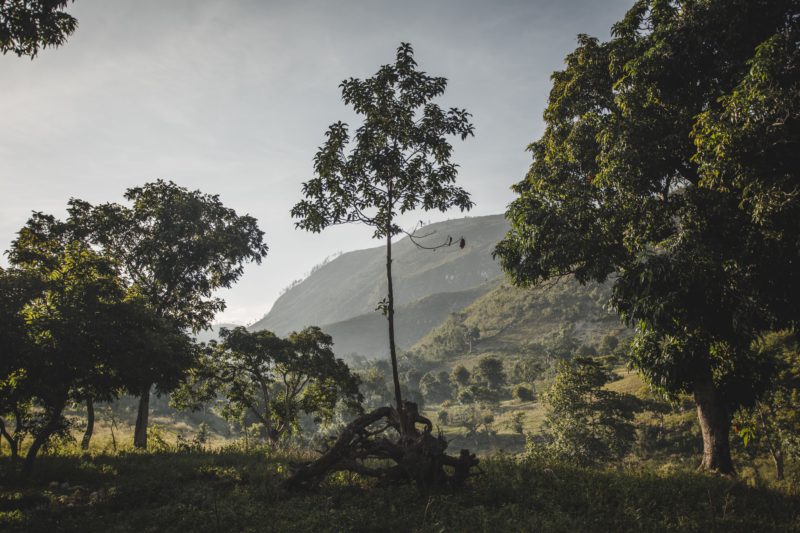
Fonds-Verrettes is a rural region nestled in the hills of southeast Haiti, close to the border shared with the Dominican Republic. Sitting on the Atlantic Hurricane Belt, Haiti often sees destructive storms that make things more difficult for a population already struggling against poverty. Strategic planting is done along the region’s steep slopes to shield growing trees from natural disasters and help restore the land’s productivity.
What Trees Are We Planting?
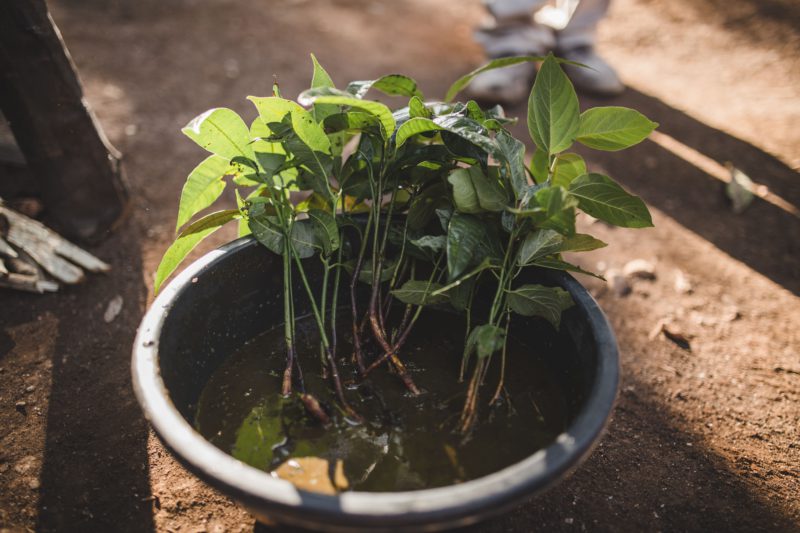
Communities here plant trees that grow as part of an agroforestry system, combining farming with tree planting on the same land to create environmental, economic, and social benefits for the community. For these agroforests to succeed, it’s important to plant multipurpose trees. These trees are intentionally cultivated and managed to provide more than one product or function.
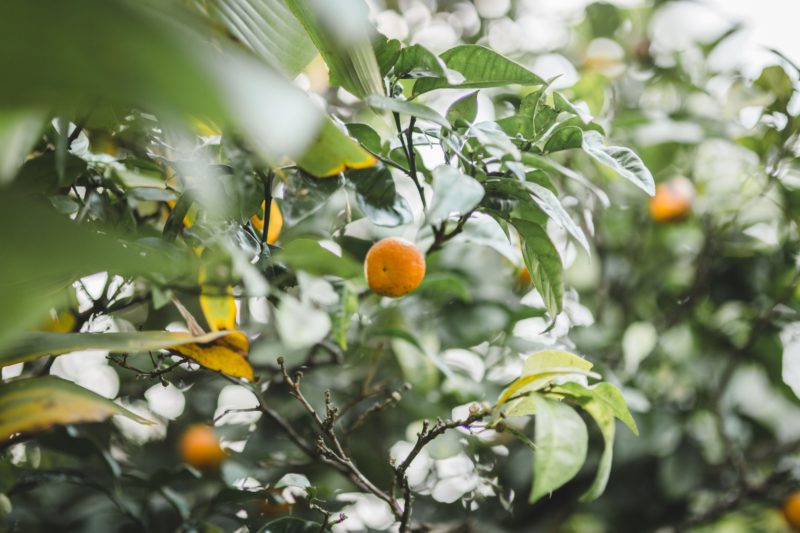
Some notable trees that are grown as part of the agroforestry system in Fonds-Verrette include fruit trees like lemon, avocado, orange, mango, and papaya. The fruit produced gives families an added boost of nutrition, and any extra produce can be sold locally. Nitrogen-fixing trees like Calliandra sp., kapab (Colubrina arborescens), Simarouba sp., and campeche (Leucaena leucocephala) add vital nutrients back into the soil. Coffee and cacao trees provide valuable commodities for export, while mahogany and kapab can be harvested for lumber. These trees generate a much-needed source of income through the forest products they provide. Over 60 different species of trees are planted here based on the needs of the landowners, with native species planted whenever possible.
Why Plant Agroforests In Haiti?
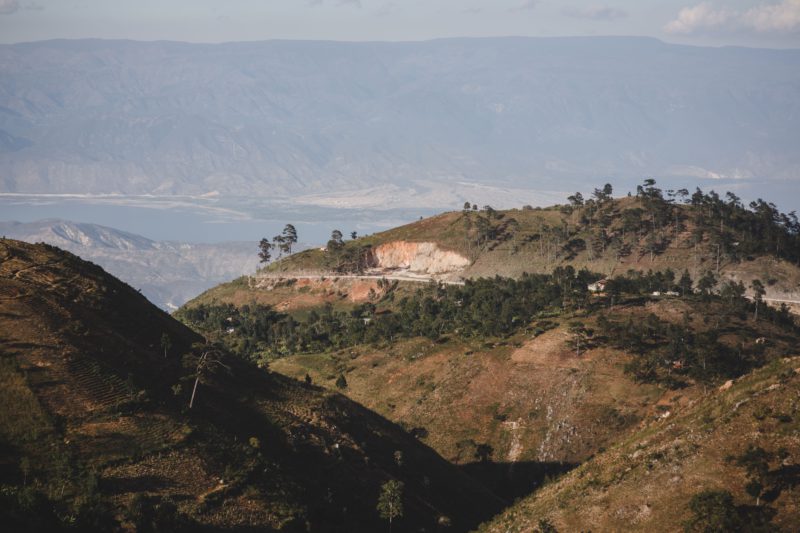
Agroforests are vital in Haiti because it is one of the most deforested countries in the world, with less than 1% of its original primary forests remaining. The loss of forests has led to further poverty and a lack of food production because the quality of the land is so poor. As a result, 60% of Haiti’s food is imported, which comes with higher prices that many locals can’t afford. Haiti has one of the highest levels of food insecurity in the world, with half of the population being undernourished and 59% of Haitians living below the poverty line.
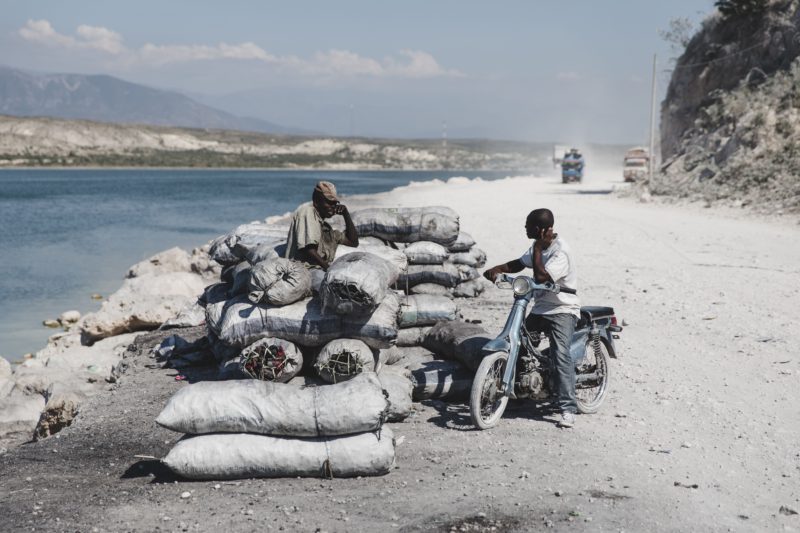
An increase in poverty is seen in rural areas where the communities depend on subsistence agriculture, which gives farmers enough food for their families to live on but not enough to sell. The high rates of deforestation here coupled with frequent extreme natural disasters have accelerated soil erosion and severely degraded the land. Poor rural farmers have limited access to the tools, training, and extra resources needed to improve their farm’s productivity and have few options to turn to in order to feed their families. The links between environmental damage and poverty are well established, and the poverty experienced here often creates desperate circumstances that lead to further ecological destruction. Deforestation is a quick way to clear new fertile land for farms or make an easy payday by selling the resultant lumber and charcoal, but these options are band-aid solutions. As forests continue to be destroyed, the cycle of poverty is only further intensified in these communities.
Establishing sustainable agriculture in these communities leads to environmental restoration and economic development. The trees incorporated into farm plots through agroforestry help restore the soil quality, reduce erosion, diversify harvests, and increase productivity. When farmers learn sustainable agriculture techniques like soil conservation, cover cropping, and composting, they are able to farm more effectively. Over time, as agriculture becomes more productive, families have more produce to eat and sell. Local communities can also build up their economy by establishing and maintaining nurseries for tree seedlings. These nurseries lead to more job opportunities and trees being planted.
Who’s Planting With Us?
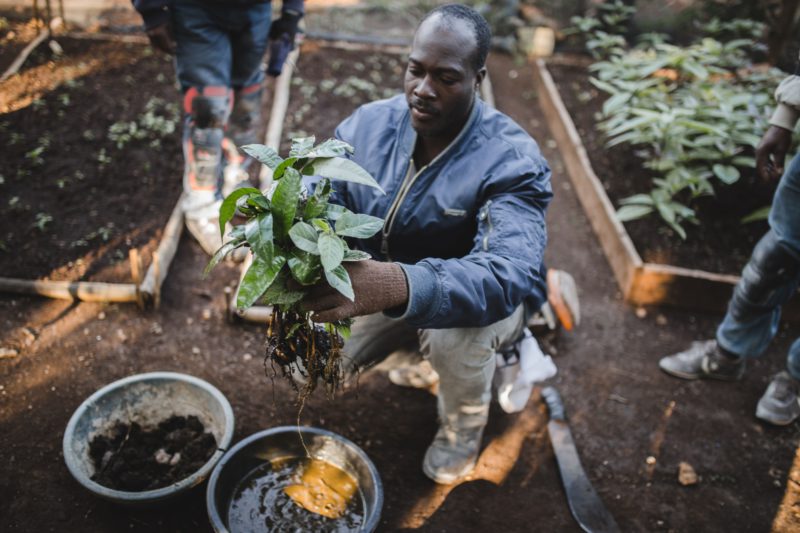
We’ve partnered with Plant with Purpose to establish sustainable agriculture systems in the communities of Fonds-Verrette. Our non-profit partner strives to empower locals to create their own change by providing knowledge and opportunity rather than material handouts. Working purposefully in cooperation with the community encourages landowners to take ownership of planting initiatives and helps reforestation efforts have greater longevity and success over time.
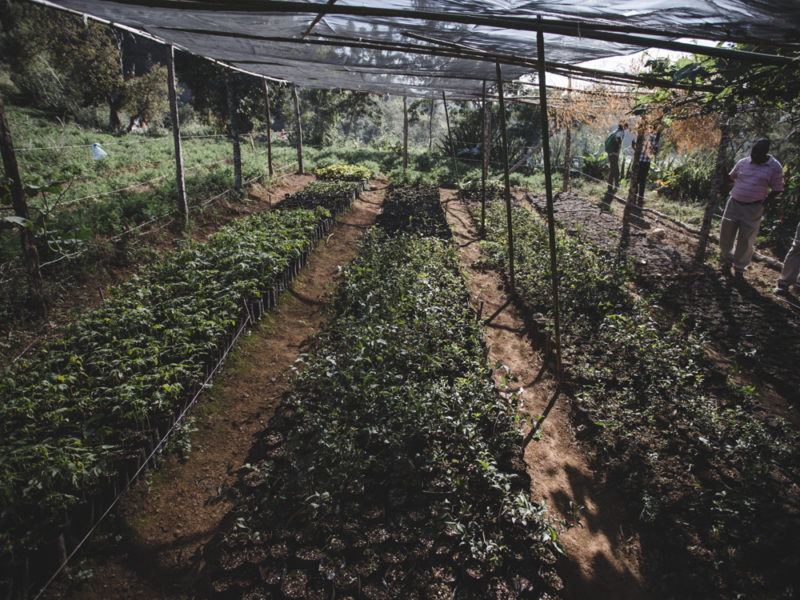
The program in Fonds-Verrettes teaches farmers about new tree varieties and how planting trees together with other crops can increase yields while also improving the quality of the soil. Most of the trees planted through the program are grown in tree nurseries run by the community. These nurseries are paired with rainwater harvesting systems to help farmers grow more trees with limited resources.
Plant with Purpose also puts a strong emphasis on economic empowerment. Through its projects, rural microfinance initiatives are put into place to further help the community grow. For example, savings groups are established to give families access to a financial safety net, enabling them to take on larger costs and the opportunity for future financial growth. These savings groups also serve as a community-based banking and loan system. The farmers and entrepreneurs participating in the credit program receive training alongside access to credit which allows them to expand the breadth and depth of their economic ventures. Through the workshops run by Plant with Purpose, community members learn how to manage both their business and personal finances.
What’s The Impact?
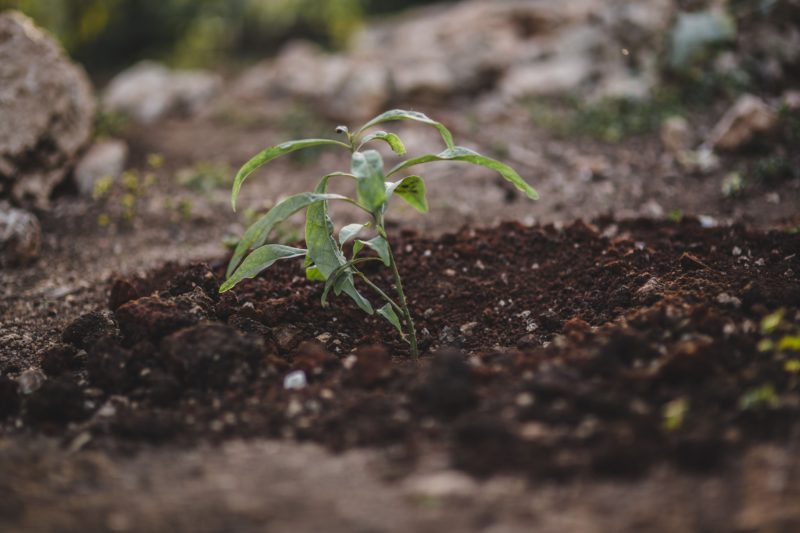
Environmental:
- Stabilize land and protect against erosion, landslides, and desertification.
- Regenerate soils and restore land fertility.
- Recharge groundwater tables.
- Prevent further deforestation and degradation by providing sustaining work for locals.
- Sequester carbon to help mitigate climate change.
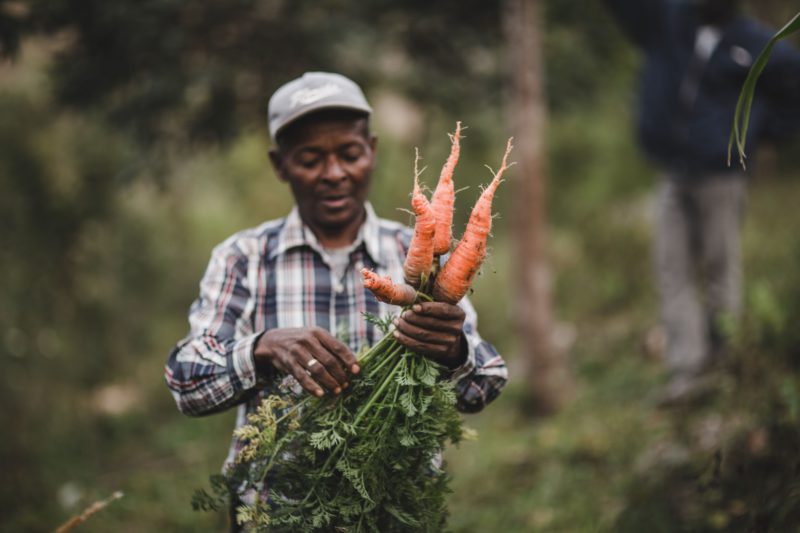
Social:
- Provide food security to families through dependable, diverse diets.
- Empower the local community in the restoration and protection of their community land.
- Educate adults and children in rural communities.
- Productive farms mean children can spend less time in the fields and more time in the classroom; additionally, more income means school fees can be paid.
- This program brings much-needed training, tools, and resources to educate adults on sustainable agriculture, as well as financial planning, business accounting, and entrepreneurship.
- Alleviate poverty within communities.
- Providing income to those who previously would have had little or no income.
- Providing economic resources like microfinance options for saving and borrowing so families can invest in the future and upgrade their quality of living.
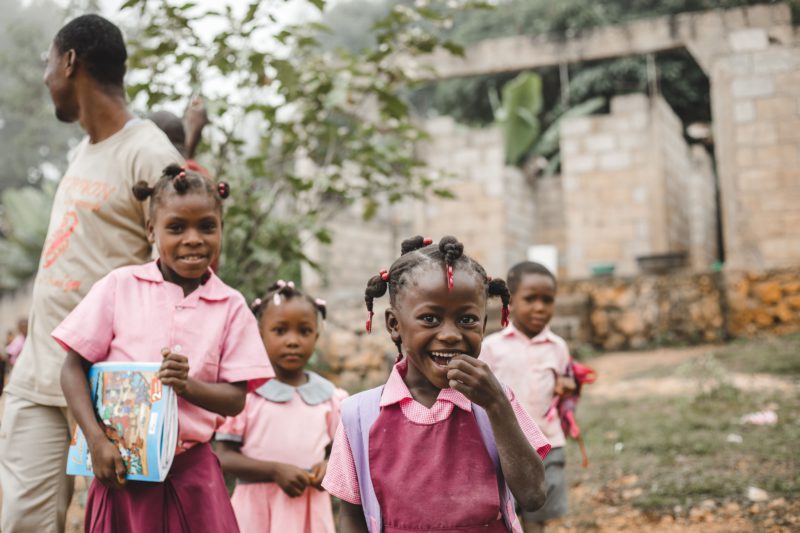
Related UN Sustainable Development Goals (SDGs)
The UN’s Sustainable Development Goals (SDGs) are a collection of 17 interlinked global goals that are a “blueprint to achieve a better and more sustainable future for all.”
Here are the SDGs that we’re addressing in our Haiti site:
#1 No Poverty: End poverty in all its forms everywhere.
#2 Zero Hunger: End hunger, achieve food security and improved nutrition, and promote sustainable agriculture.
#3 Good health and Well-being: Ensure healthy lives and promote well-being for all ages.
#4 Quality Education: Ensure inclusive and equitable quality education and promote lifelong learning opportunities for all.
#5 Gender Equality: Achieve gender equality and empower all women and girls.
#6 Clean Water and Sanitation: Ensure availability and sustainable management of water and sanitation for all.
#8 Decent Work and Economic Growth: Promote sustained, inclusive, and sustainable economic growth, full and productive employment, and decent work for all.
#12 Responsible Consumption and Production: Ensure sustainable consumption and production patterns.
# 13 Climate Action: Take urgent action to combat climate change and its impacts by regulating emissions and promoting developments in renewable energy.
#15 Life on Land: Protect, restore and promote sustainable use of terrestrial ecosystems, sustainably manage forests, combat desertification, and halt and reverse land degradation and halt biodiversity loss.
Want to see where your trees are planted? Register your trees now.

